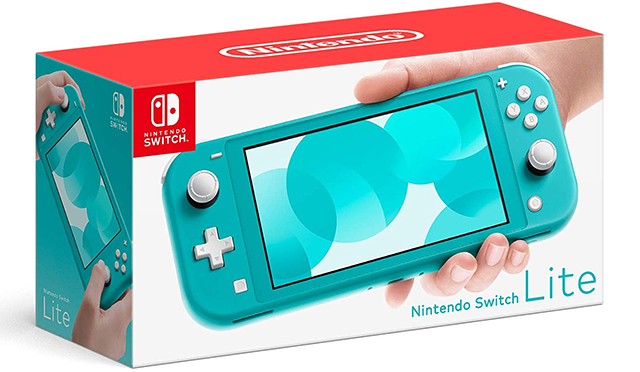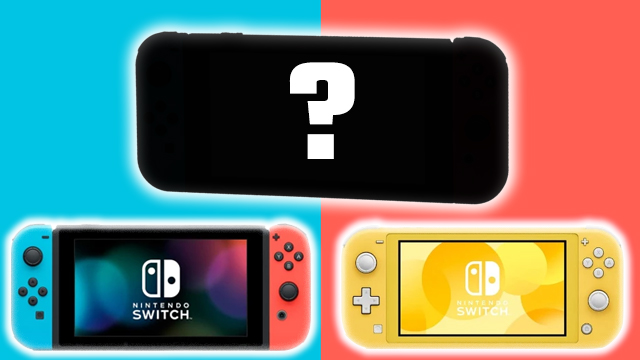Rumors abound that the Nintendo Switch Pro console isn’t just in development, but will be entering production at the end of 2020’s first business quarter. That means that we could see the enhanced hybrid console release later this year, possibly before or alongside the PS5 and Xbox Series X. While the concept of a souped-up Switch is appealing, it would be a mistake to release the luxury version right around the same time as its expensive competitors.
The rumors have stemmed from a report by Digitimes, which claims that a Switch Pro will launch by mid-2020. The potential specs on the rumored handheld could be quite impressive, as an upgraded Nvidia system on a chip could rival the PS4 and Xbox One’s performance level when docked. The Nintendo Switch Pro would also have a larger high-quality IGZO screen and a magnesium alloy body that would give it a premium feel compared to the current Switch’s plastic shell.
All of that sounds great and would be in line with upgrades Nintendo has done in the past for their handheld systems, such as the New Nintendo 3DS. All in all, the device is rumored to be priced around $399, which is $100 more than the regular Switch and $200 more than the handheld-only Lite variant.
ALSO: How the PS5 and Xbox Series X could copy the iPhone
However, there is one question that has to be asked about every new piece of hardware: who does this device appeal to? In this case, it would be Nintendo diehards and early adopters that aren’t afraid to spend a lot of money on an untested product that could possibly have issues (and Nintendo has had a lot of those as of late with Joy-con drift being the biggest example). That latter demographic is also likely purchasing either an Xbox Series X or a PlayStation 5 later this year, if not both next-generation consoles, and both of those systems are going to be pricy.
Buying all three systems could easily cost around $1500 or more, and if one purchase was going to be put on the backburner by these luxury buyers it would be the Nintendo Switch Pro. Given that the Switch Pro’s games will presumably also be compatible with the regular Switch and the Switch Lite, it stands to be a fancy upgrade for those who want to see better visuals and performance for the console’s current games. As such, it’s less of a vital step-up compared to the PS5 and Xbox Series X.
What would be the selling point of the Nintendo Switch Pro?

The biggest hurdle Nintendo has with the Nintendo Switch Pro is convincing the average consumer that they should upgrade. Due to the company’s desire to not alienate most of its user base, Nintendo’s support of luxury systems has been sketchy at best. While some noteworthy games had worthwhile upgrades on the New Nintendo 3DS (you could use the c-stick for Super Smash Bros. for Nintendo 3DS and it had faster load times, Hyrule Warriors Legends played at a significantly higher frame rate), there were only a handful of games that were actually exclusive to it with Xenoblade Chronicles and Fire Emblem Warriors being the only two notable ones by Nintendo. The promise of a few games running slightly better and an exclusive or two isn’t the greatest sell for a $399 system and Nintendo will need to demonstrate a better use case for the Switch Pro if they want it to be a success.
Nintendo is essentially in a screwed if you do, screwed if you don’t situation as far as games go. It needs to create exclusives to make the Nintendo Switch Pro worth buying, but if it creates too many, then existing owners will feel wronged and Nintendo will have to split the Switch ecosystem into two parts.
Perhaps the best way of selling the console would be showing off just how much better it can make a game perform, and the currently unnamed Breath of the Wild sequel would be a perfect fit for that as the original had technical issues no matter if players were docked or playing in handheld mode. Making the original game, and its sequel, play at a solid 60 frames-per-second would go a long way to show that the upgrade is worth it for serious players.
Nintendo will also have to balance the newly added strength with the portability that made the Switch a must-have console for many players. If it becomes too unwieldy to carry around and has a terrible battery life then it’s essentially a system that needs to be docked or plugged in at all times thus losing its handheld appeal. The original Switch is already pretty awkward as a handheld and the Lite did a great job of making the system pocketable, but it also lost the whole hybrid appeal. It’s a tough balancing act to perfect and Nintendo hasn’t been able to completely nail it with its previous two attempts, so I remain skeptical with the Pro.
The Switch works because it is an alternative

One of the reasons why the Nintendo Switch has been so successful is that it’s so unlike the current systems offered by Sony and Microsoft. It comes out a lower price point, it has the portability factor, and it features great games by Nintendo that can’t be played anywhere else. By going up to a potential $399 price point, it loses the affordability and the enhanced power will open it up to even more ports of games that players can already enjoy elsewhere. Considering the vast majority of first-party Nintendo games will also play on the other Switch versions, its appeal lessens greatly as a must-have device.
This isn’t to say that the entire idea behind the Nintendo Switch Pro is a bad one as I still believe it to be a solid revision and one with a definite appeal. It’s just one that will appeal to a fraction of the audience that Nintendo generally aims for. As someone that bought every Nintendo 3DS revision, I’m going to be picking up one whenever it launches because I fall into their target user base. It just makes much more sense to let the new consoles launch and then release in early 2021 instead. Sure, you miss a Christmas rush but parents are going to be buying the much cheaper Lite for their children, not the luxury version. The system can fill its niche like the Xbox One X did for Microsoft, but it won’t be a mainstream gift like the previous two versions.







